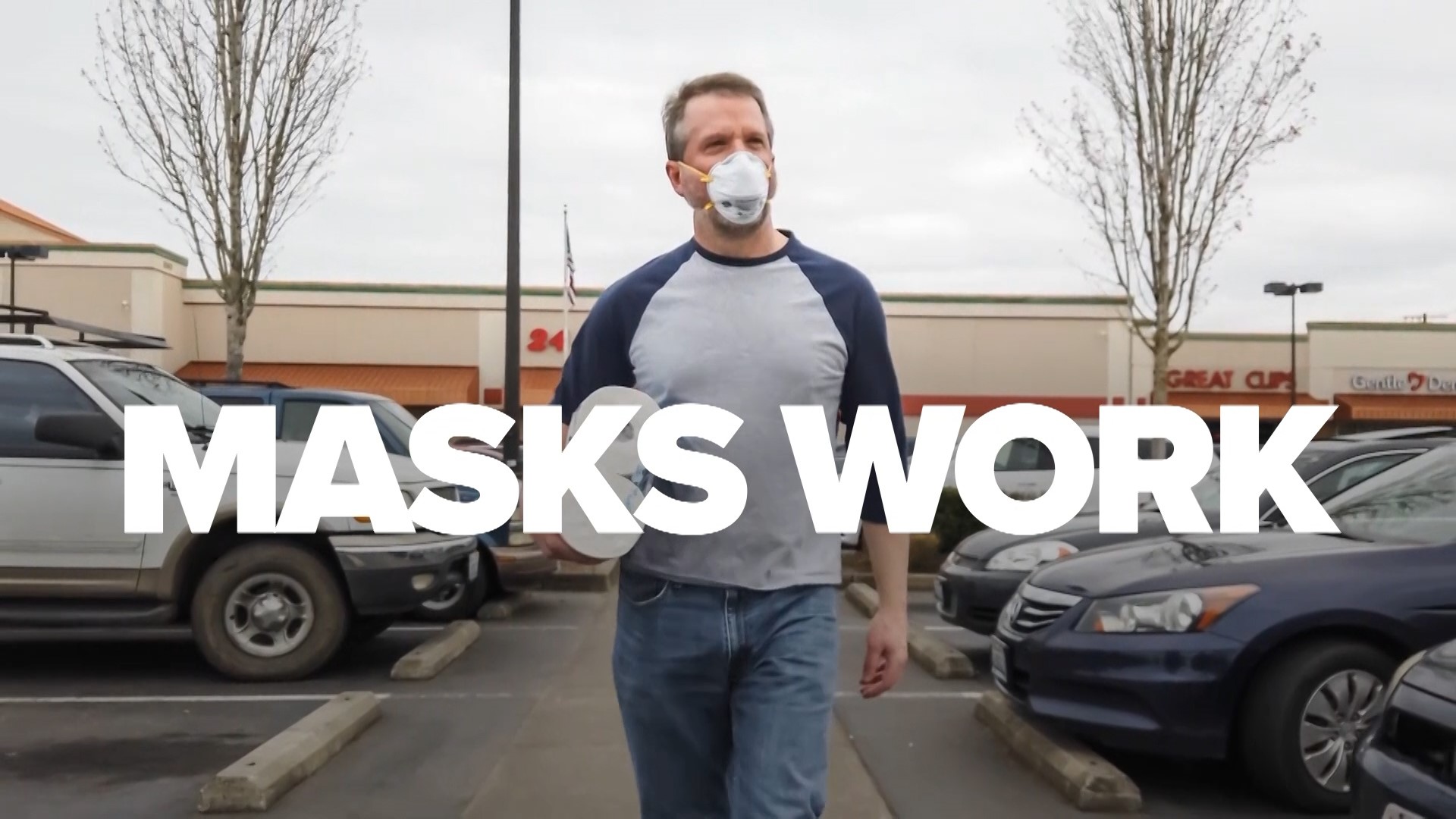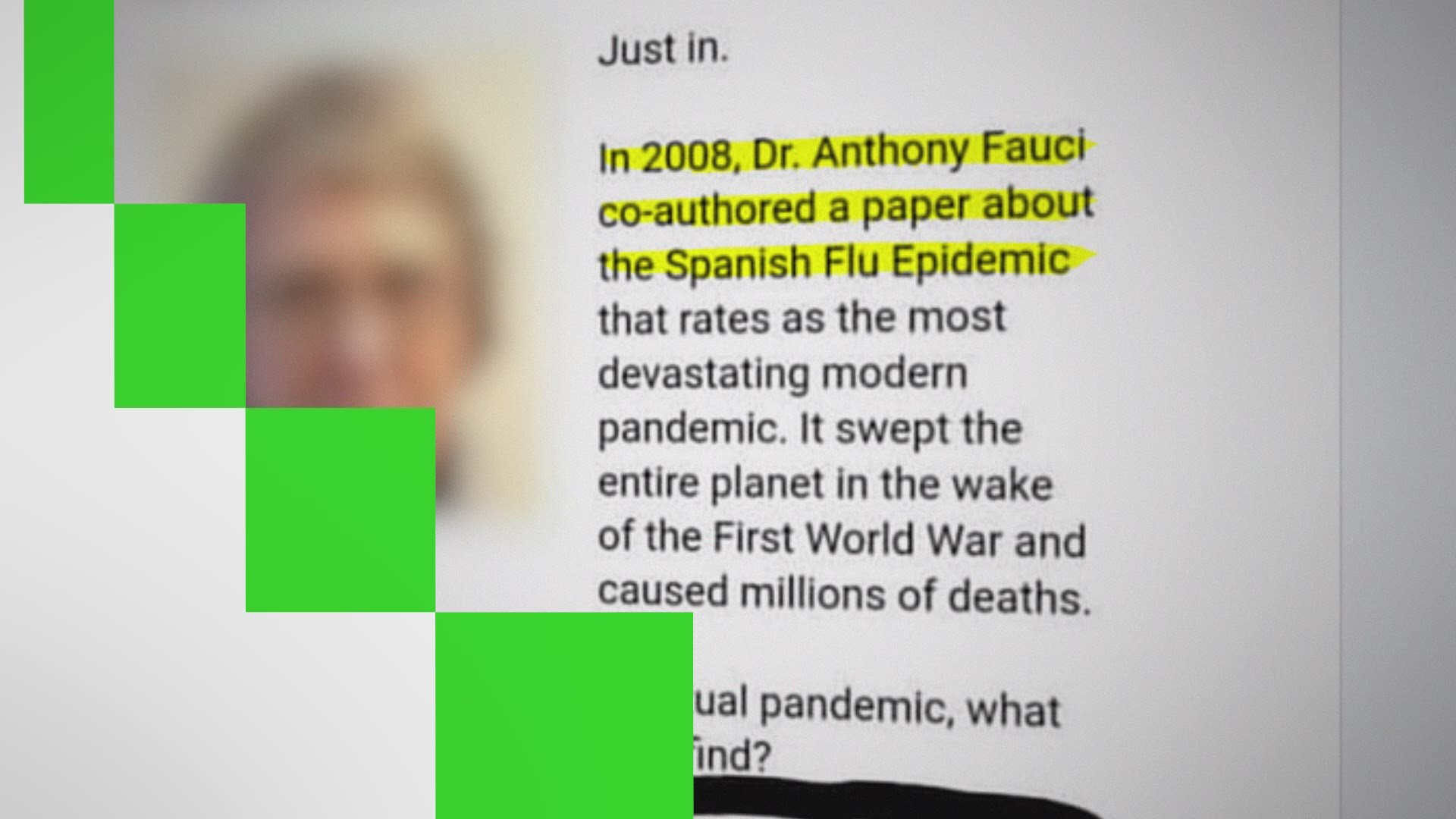The newest projection from a coronavirus model cited by the White House says the U.S. will have nearly 200,000 more deaths from COVID-19 by March if current measures to stop the virus' spread remain the same.
The Institute for Health Metrics and Evaluation (IHME) at the University of Washington in Seattle on Thursday projected that the U.S. will have 320,403 deaths by January 1 and 438,940 by March 1.
A Johns Hopkins University tally puts the current number of U.S. deaths related to COVID-19 at more than 242,000. That's including two straight days with more than 1,400 deaths each.
The IHME model says increasing to universal use of face masks would save about 68,000 of those lives projected by March 1. On the other hand, easing mask restrictions could add another 250,000 to that projected death toll.
RELATED: 4-to-6 week lockdown, financial help could get COVID-19 controlled, Biden task force member says
IHME posts updated projections each month, usually looking anywhere from three to five months ahead. Its earlier models underestimated the number of deaths.
March 26 projection: 81,000 U.S. deaths "over the next four months" (Range: 38,000 - 162,000). At the time of this prediction, 1,761 people in the U.S. had died. Four months later, on July 26, there were 147,033 confirmed U.S. deaths related to COVID-19, according to IHME.
May 4 projection: 134,475 deaths by early August (Range: 95,092 to 242,890). There were 153,209 confirmed U.S. deaths related to COVID-19 on August 1, according to IHME.
June 11 projection: 169,980 U.S. deaths by October 1 (Range: 133,201 - 290,222). According to Johns Hopkins University, the U.S had 207,966 cases on October 1.
July 7 projection: 200,000 U.S. deaths by November 1 (Range: 186,087 to 244,541). The U.S. had 231,216 by that date, according to Johns Hopkins.
August 6 projection: 295,011 U.S. deaths by December 1 (228,271 with universal mask use). As of November 12, the U.S. would have to average 2,757 COVID-19 deaths per day to hit that mark.
September 3 projection: 410,451 U.S. deaths by January 1, 2021 (Range: 347,551 – 515,272). As of November 12, the U.S. would have to average 3,357 COVID-19 deaths per day to hit that mark.
Dr. Ali Mokdad, a professor of global health at IHME, predicts the U.S. death toll from COVID-19 could pass the 1918 Spanish Flu -- 675,000 -- if people who are not wearing masks, not washing hands frequently, not social distancing and attending large gatherings don't change their habits.
IHME says it uses a hybrid modeling approach that is "grounded primarily in real-time data instead of assumptions about how the disease will spread."
Even with the latest projection, there is some good news.
Doctors now better know how to treat severe cases, meaning higher percentages of the COVID-19 patients who go into intensive care units are coming out alive. Patients have the benefit of new treatments, namely remdesivir, the steroid dexamethasone and an antibody drug that received emergency-use approval from the Food and Drug Administration on Monday. Also, testing is more widely available.
In addition, a vaccine appears to be on the horizon, perhaps around the end of the year, with Pfizer this week reporting early results showing that its experimental shots are a surprising 90% effective at preventing the disease.
And there's a change pending in the White House, with President-elect Joe Biden vowing to rely on a highly respected set of medical advisers and carry out a detailed coronavirus plan experts say includes the kind of measures that will be necessary to bring the surge under control.
IHME is one of several models that tracks daily new cases of coronavirus and deaths related to it. While all of them do not line up exactly, they are in the same vicinity in their counts.
The Associated Press contributed to this report.


